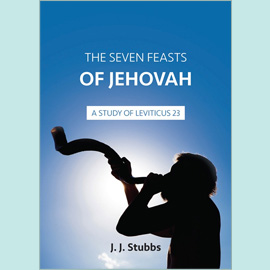The person who catches the heavenly vision places the telescope of faith to the eye of his soul and gazes upward. It has been said that "distance lends enchantment to the view", and what an enchanting view is visible to faith! There come into this perspective three majestic mountain peaks which appear to kiss the sky. They make a charming silhouette. These three mountain peaks represent three notable events which lie in the future.
The first in point of chronological order is the substance of 2 Peter 1.19, summed up in the two words "day star".
The second finds its place in v.16 and is described as "The power and coming of our Lord Jesus Christ".
The third is majestic, monumental and magnificent, and is that to which every believer looks forward with blissful anticipation, called "new heavens and a new earth" (2 Pet 3.13).
The first great peak
In 1.19 Peter makes his solitary reference to the rapture. He, of course, knew that he would go forth as a martyr for His Lord, and that to reach Christ in glory he would have to pass through death. However, he does not overlook the truth of the coming of Christ for His own, although he has particularly the manifestation in view.
"We have prophecy made plain whereunto ye do well that ye take heed in your hearts, as unto a light that shineth in a dark place; until the day dawn and the day star arise" (v.19). With words such as these F.W. Grant translates the verse. John Baptist was "a burning and a shining light" (Jn 5.35) and he was the last of the prophets prior to the advent of Christ: the law and the prophets were until John. The word translated "dark" is found only here in the New Testament. Though the night is dark the day is about to dawn, as Paul reminded the Romans - "The night is far spent, the day is at hand" (13.12).
Before the eternal day unfolds its glory and wonder the day star or morning star will appear; then they that are Christ's at His coming shall leave forever this scene of sorrow and tears, and enter into the delights of the Father's house on high.
The second great peak
Peter affirms that no single prophecy of Scripture is of private interpretation, that is, no single prophecy can possibly be interpreted apart from the whole body of prophetic truth contained in Holy Scripture. This prophecy was not by the will of man, but by the direct inspiration of the Holy Spirit through chosen vessels. Verse 16 presents the Day of Christ's manifestation and glory. Peter had a preview of that glorious event when he was on the holy mount with his Lord and saw Christ metamorphosed. The careful reader of the context of the passages which record the Transfiguration must have concluded that this event was a microcosm of the Kingdom glory of the Lord Jesus Christ. "He received…honour and glory" on that occasion. Honour would refer to that bestowed when the attesting voice of the Father said, "This is my beloved Son". Glory would have in view the light that enshrouded Him at that time.
The manifestation of the Lord Jesus Christ is part of the hope of the believer. Paul writing to Timothy reminded him that there is a crown of righteousness ahead for "all them also that love his appearing" (2 Tim 4.8). If we really love His appearing we shall seek to be acceptable to Him in the day of review. As is commensurate with our fidelity so shall our reward be, and the place in the Kingdom will be in keeping with the fathfulness manifested when we have had the opportunity of serving the Lord in this the day of opportunity.
The third great peak
This great peak is visible to the eye of faith and is that to which Peter refers in 3.13. The believers to whom Peter was writing were encouraged to look for "new heavens and a new earth" - and this because of His promise. The curse of sin rests on the scene. Tragedy has stalked through the earth since our first parents exchanged the garments of purity for a covering of faded leaves. This condition can never suit a holy God. He has, therefore, promised new heavens and a new earth, abodes of the saints where every trace of sin shall have been eradicated all through the sacrifice of Calvary. This scene is ripening for judgment. Soon the heavens and earth shall be thrust into the crucible, and placed in the flame of divine wrath. Then out of this God shall bring forth something that will suit His own heart and mind, a habitaton in keeping with God's own nature and fulfiling His own divine purpose both for the heavenly and the earthly saints.
The thought of "looking for" is emphasised three times in vv.12-14. Centuries before, Isaiah, too, turned the thoughts of Israel to whom he prophesied to the new heaven and the new earth as in 65.17, and 66.22.
The word "new" is interesting. There are two words for "new": one looks forward - "young" as opposed to "old", while the other looks backward - "fresh" in contrast to "worn out". It is the latter word that is used here. In Matthew 9.17 Christ said, "They put new wine into fresh winskins" (RV). It is to this point that we are directed in John 1.29: "Behold the Lamb of God that taketh away the sin of the world". The full effect of the sacrifice of Calvary will then be realised, for all trace of sin shall be done away and God's will shall be done on earth as it is done in heaven.
Concluded.









